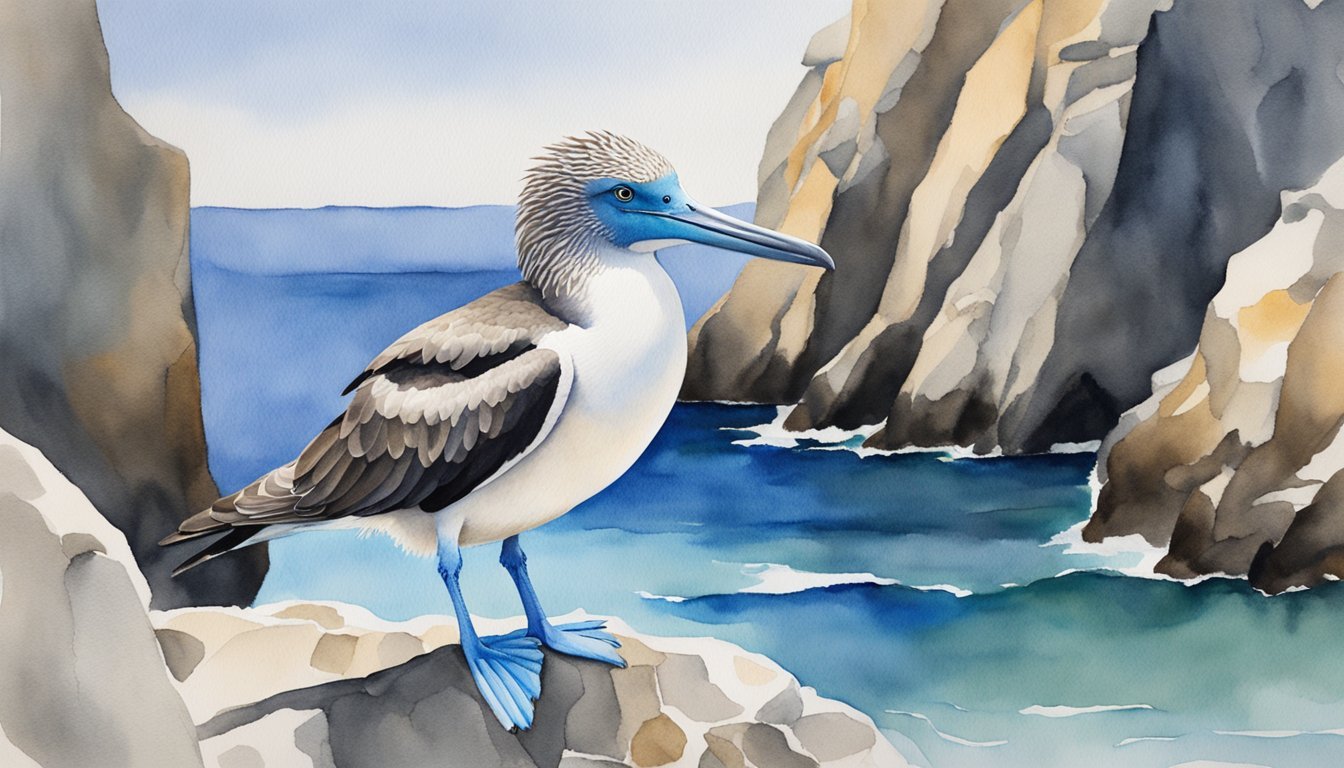Boobie Bird Biology

Boobie birds belong to the family Sulidae, a group of large seabirds with striking physical features and an interesting distribution across tropical and subtropical seas. They are known for their agility in flight and are part of the order Suliformes or Pelecaniformes.
Physical Characteristics
Booby birds, part of the genus Sula, exhibit a strong and streamlined body shape, suited for life at sea. They have long wings and a sturdy, pointed bill that assists in their plunge-diving fishing technique. The size of these birds ranges considerably, with some species growing over two feet in length, possessing a wingspan that often reaches up to 1.5 meters. Their weight can vary, with some boobies weighing up to 3 kilograms.
In terms of plumage, boobies can vary dramatically between species and subspecies. The Blue-footed Booby, scientifically named Sula nebouxii, is notably known for its bright blue feet, which play a significant role in its mating rituals. Blue-footed boobies are considered a marine bird with a significant range of habitats. Other species like the Nazca Booby and the Peruvian Booby each have distinct features that differentiate them, from the coloration of their feathers to the different shades present on their bills and tails.
Habitat and Distribution
Boobies are typically found in tropical and subtropical oceans worldwide. They are not limited to any one region, with species like the Red-footed Booby, Sula sula, and the Masked Booby, or Blue-faced Booby, S. dactylatra, displaying a wide range in the Atlantic, Pacific, and Indian oceans. These birds often nest in colonies located on islands. Habitat preferences and distribution can differ from species to species, with some boobies favoring rocky coastlines and others being more prevalent on flat, sandy islands.
Their diet primarily consists of small fish and squid, which they catch by dive-bombing from the air into the water, showcasing their remarkable hunting skills. As for conservation status, most booby species are classified as ‘Least Concern’ by the IUCN, indicating stable population trends, though some subspecies do face threats from habitat loss and human activities.
What Similarities Do the Blue-Footed Booby and Other Boobie Bird Species Share?
Exploring the bluefooted booby’s life reveals fascinating similarities with other booby species. All share distinctive courtship displays, striking plumage, and oceanic habitats. Their diets mainly consist of fish, and they exhibit social behaviors that enhance hunting success, making them adept predators in their aquatic environments, just like their booby relatives.
Behavior and Ecology
Boobie birds exhibit fascinating behaviors and play a vital role in their ecosystems. These seabirds possess unique adaptations for feeding and breeding, and they demonstrate a complex social structure.
Feeding
Boobie birds are carnivorous, relying heavily on a diet of fish and seafood. They are remarkable divers, capable of plunging from heights of up to 80 feet into the water to catch prey such as anchovies, sardines, and squid. In a display of agility, boobies may also snatch flying fish from the air. Their feeding grounds span across various bodies of water, ranging from the tropical and subtropical regions of the Pacific, Atlantic, and Indian Oceans, to specific areas such as the Gulf of California and the Galápagos Islands.
Reproduction
These birds are known for their monogamous partnerships and intricate mating rituals. Courtship includes a series of dances and displays like sky-pointing to attract mates. Nesting sites are typically found on cliffs or the ground within colonies. Boobies lay eggs that undergo an incubation period, after which chicks are reared by both parents. The Blue-footed Booby’s mating display, where males showcase their blue feet, is especially iconic.
Social Structure
Boobie birds often gather in groups, yet they exhibit a certain degree of tameness when around humans. Nesting colonies create opportunities for social interaction and group defense against predators. Chicks are raised in these protective environments until they are capable of swimming and feeding independently. While boobies can be found flying solo or in pairs while hunting at sea, their social lives are primarily centered around their breeding colonies, which can be located from Southern and Middle America to the Pacific Islands.

